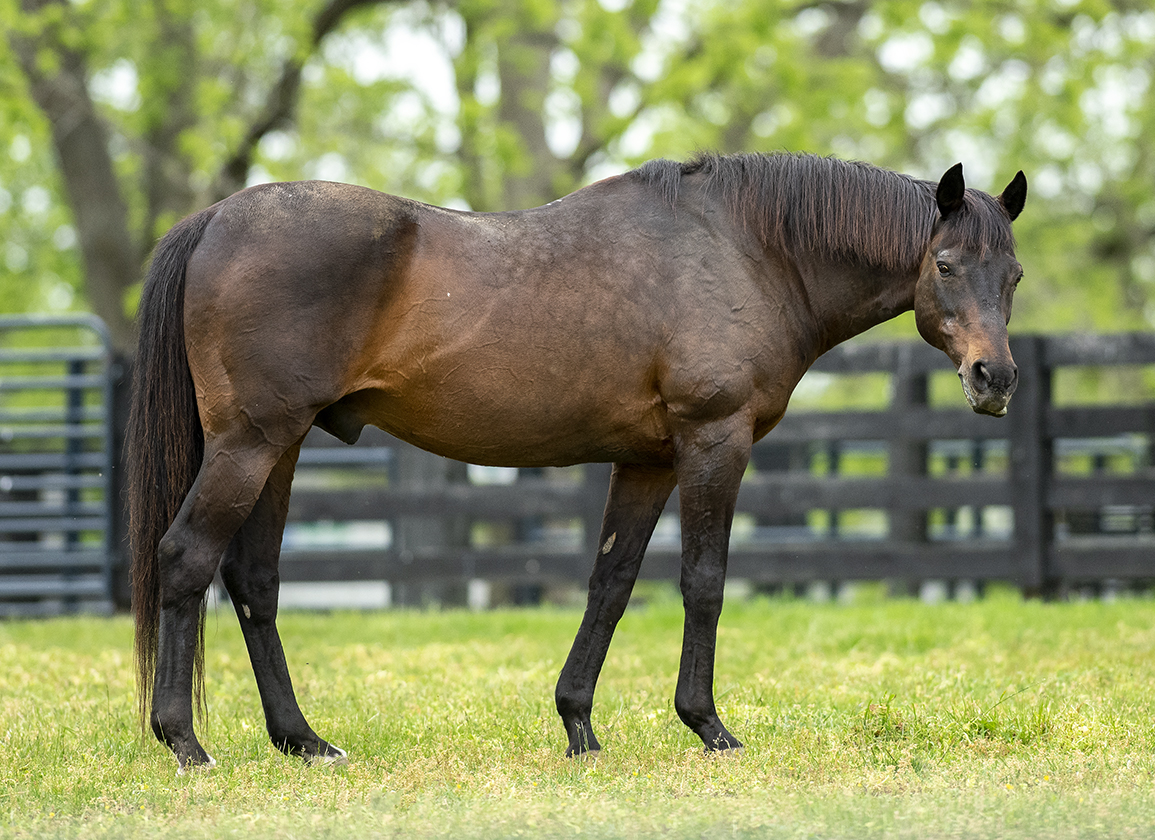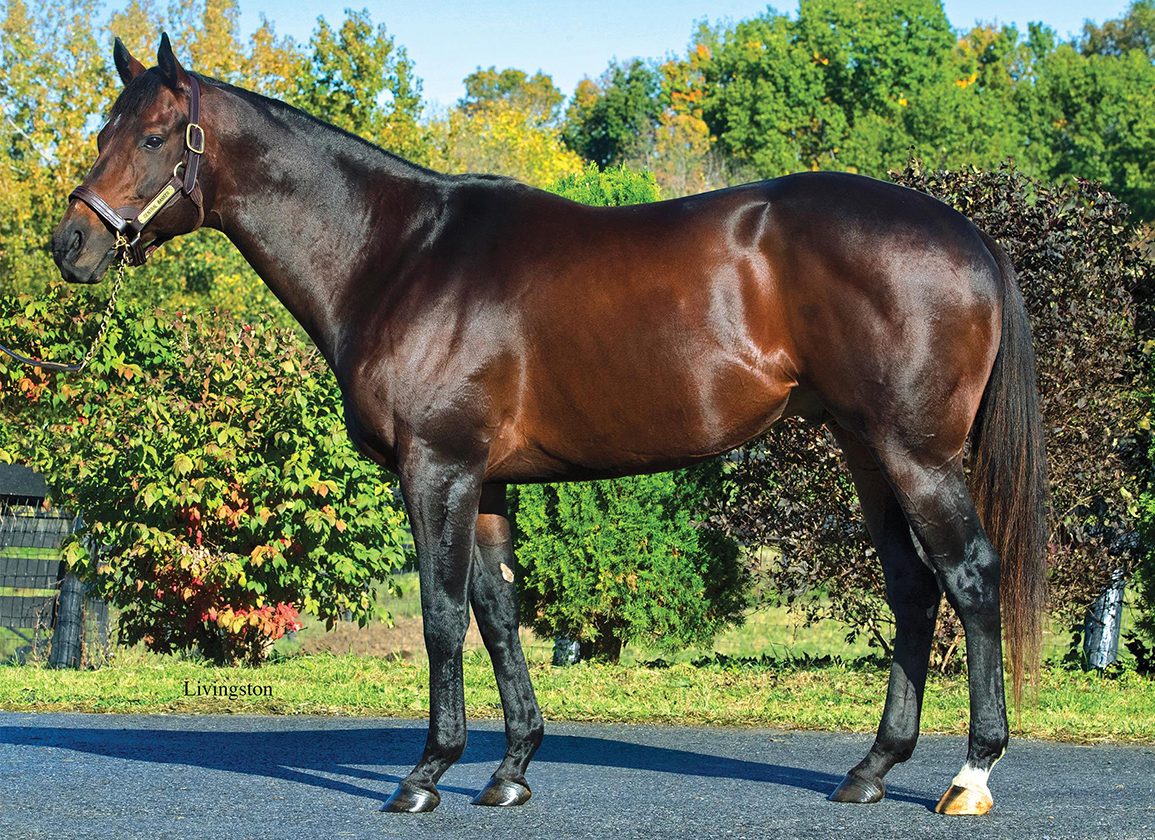Just two live race days remain in 2021 to complete a remarkable year of racing action on the New York Racing Association, Inc. (NYRA) circuit. The NYRA Press Office checked in with a selection of New York-based racing personalities to get their reflections on a memorable year.
Joe McMahon owns McMahon of Saratoga Thoroughbreds along with his wife Anne. Raised in Saratoga Springs, McMahon has been active on the board of the New York Thoroughbred Breeders, Inc. since its inception and he now serves as an appointed Breeder Member of the New York State Thoroughbred Breeding and Development Fund Board.
McMahon of Saratoga Thoroughbreds is located on Fitch Road just five minutes away from the prestigious Saratoga Race Course and is home to Central Banker, the 2021 leading sire in New York who was also the leading first, second and third crop sires in the previous three years. The farm is also home to Teuflesberg as well as Solomini and Redesdale.
Describe the journey bringing Central Banker to prominence?
McMahon: “When the first 2-year-olds sold, a couple of them sold really well. The pinhookers in Florida just raved about how much they liked him and that they had great mental attitudes and were good looking. They trained well, liked to train and people noticed that.
“In the first year, he had about five winners at Saratoga. He had several stakes winners and that's gone on the same way every year since then.
“He's just a really nice horse. He's been an inexpensive horse to breed to. From the get-go he's shown that he's good value. He's never been over $7,500 and I think breeders recognize the value and take advantage of that. We could have probably raised the fee after the second year, but we didn't. We wanted to keep him at good value for New York breeders and keep him affordable.”
How does Central Banker stamp his offspring?
McMahon: “The conformation of his progeny are pretty much cookie cutters of himself. They're well-made horses. They have good bones, they're straight through their knees, they have good hips and hind ends. They also have a very deep girth, which is very important in a racing prospect.”
You added some new faces to the stallion roster in Solomini and Redesdale. Talk about what made them both so appealing.
McMahon: “Solomini is a horse who showed brilliance as a 2-year-old. He won the Los Alamitos Futurity in California [but was disqualified and placed third] which was a Grade 1 race, beating McKinzie who now stands for $30,000 in Kentucky. Solomini was disqualified in that race on a very questionable call. I always looked at that as an opportunity for us. Had he won a Grade 1 race, he would likely be in Kentucky. He was an extremely good horse. He was multiple Grade 1-placed and ran against top company. He was placed in two Derby preps in Arkansas and he's by Curlin. The physical of Solomini and his precocity as a 2-year-old gave me the impression that he would fit to New York really well.
“Redesdale is one of the best bred horses to retire in New York state. He's out of a full-sister to Danehill, who was absolutely regarded as one of the best stallions in the world so he's got an impeccable pedigree. He's race record was good. He won three of four starts. His last start, even though he was third, his Beyer was in the 90s. He really indicated that he could be a sire prospect in the same light as horses like Danzig, when I think of comparing horses. Danzig was very lightly raced but extremely effective in his races.
“Redesdale has a good physical and is very correct. We thought he would be a value play for us to bring him to New York and stand him for a reasonable fee. He just happens to be by Speightstown, so now we have two Speightstowns in the same stallion barn with him and Central Banker. One is a proven sire but we think Redesdale will be a very good sire. We anticipate him with coming out with runners early with a high degree of speed. We'll see what happens.”
What do you look for in acquiring a stallion prospect?
McMahon: “I'm a big believer in speed. I think horses have to have some speed to go with a lot of mares. That's not to say that horses who win the Kentucky Derby or Travers won't make good stallions, but if I look at it from the point of view of New York racing and breeding, I know that the majority of races that our stallions' offspring are going to be running in are sprint races. If I look at an Aqueduct card in the wintertime, which runs for almost six months, those races are predominately speed-oriented races. That goes into our thinking when we try to buy a stallion. We want one that fits our program, and speed is a big part of it.
“Central Banker won on the turf and won going one turn, but he's from a sprinting line himself. He's by Speightstown and his profile as a racehorse was the same. That was certainly one of the main attractions to him when we bought him. His balance and his physique told me when I looked at him that he would go with a lot of mares. Horses that are extremely well-balanced like this horse go with a lot of different types of mares. They can overcome a lot of different types of problems if they give their offspring that balance. That's what he did and that's what we hoped he would do when we bought him.”
What is so appealing about the New York program from a breeder's perspective?
McMahon: “Let's face it, this is a difficult business. It's not easy to win races on the NYRA circuit period. If you look at the New York-bred program as a safe haven like a lot of people do, you're going to invest a certain amount of money to buy a racehorse prospect or to raise one. The idea that you gain some protection through the restricted racing program certainly is a huge advantage. I think that's a big part of it – the fact you're on a circuit where you get great exposure year round to the betting population and to the horse people. That's a plus. You can win a race at other tracks for $60,000 but you can win one at Saratoga for $65,000. Which one is going to give you more attraction? You're on a stage which really helps you a whole lot with recruiting owners, and if you're a New Yorker, you focus on year round racing. It's the best program in the world without a doubt.”
This was a record year at the Fasig-Tipton New York-bred sale in Saratoga. Talk about the success you had this year in the sales consignment department.
McMahon: “It was a good year this year. We had nice yearlings on offer. The market was strong. Everything just kind of came together well. We foal about 40 to 50 foals of our own each year and so every once in a while it all comes out right and you get a good physical crop. That's what happened this year. We've been at it for a long time. We focus on mares that are runners themselves, not so much expensive graded winners, but hard-knocking mares to breed to these stallions. This was just a year where everything went right. The majority of the horses we sell are by New York stallions, so you're competing against commercial horses in Kentucky with more opportunity. They get to breed to better mares. It's really remarkable that we're able to compete against those horses and hold our own.”
The post Q&A: Breeder Joe McMahon On Central Banker’s Successful 2021 And The New York Breeding Program appeared first on Horse Racing News | Paulick Report.



